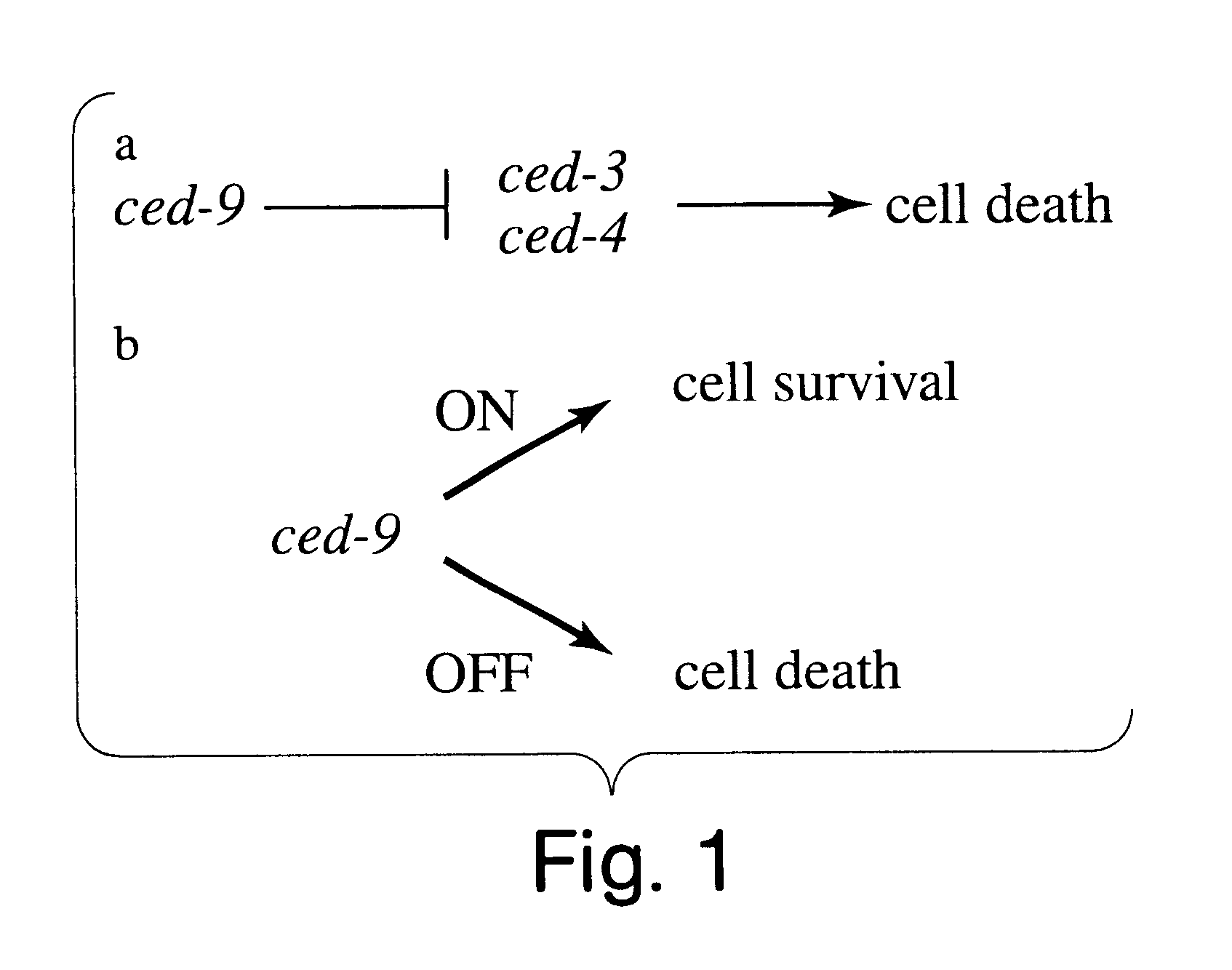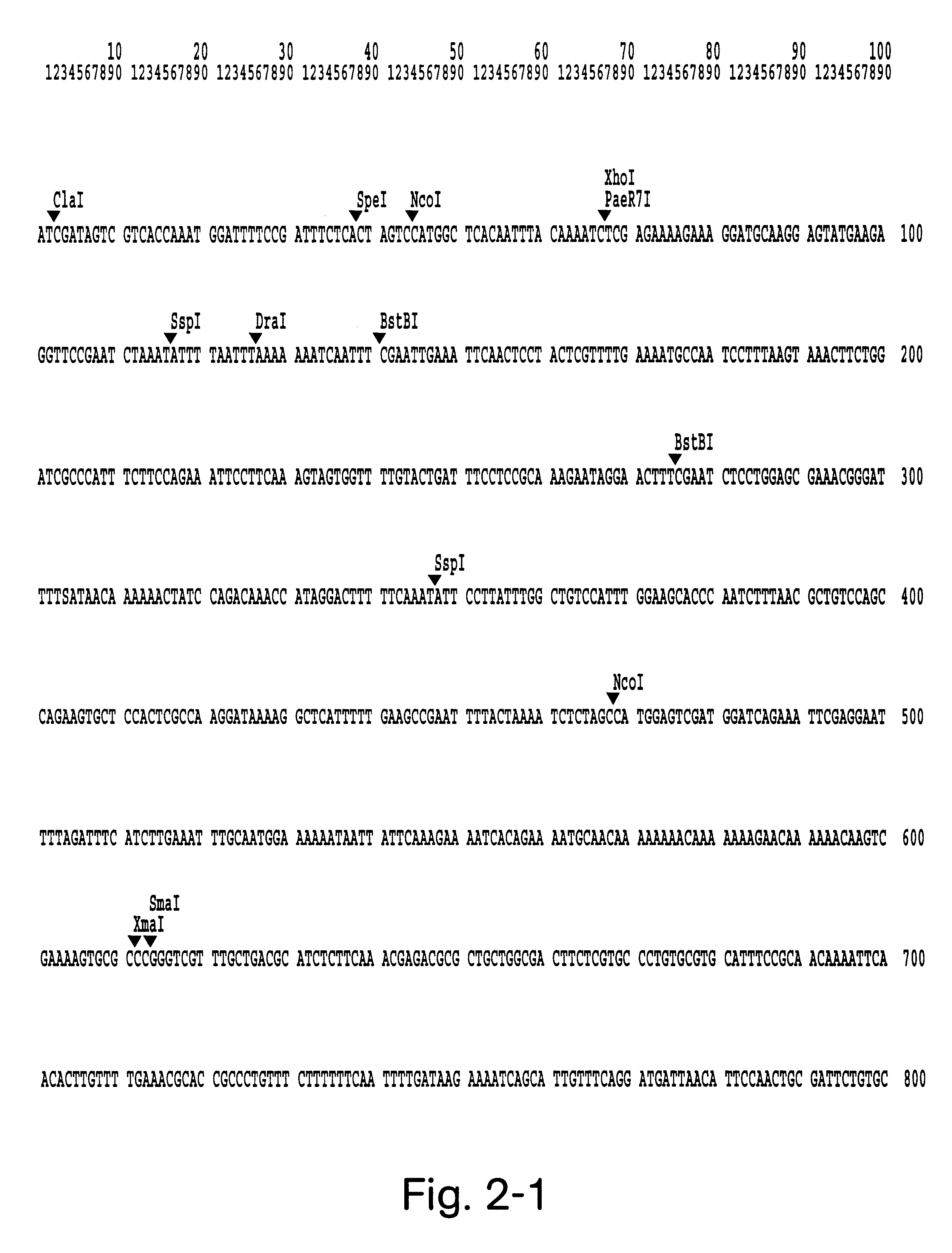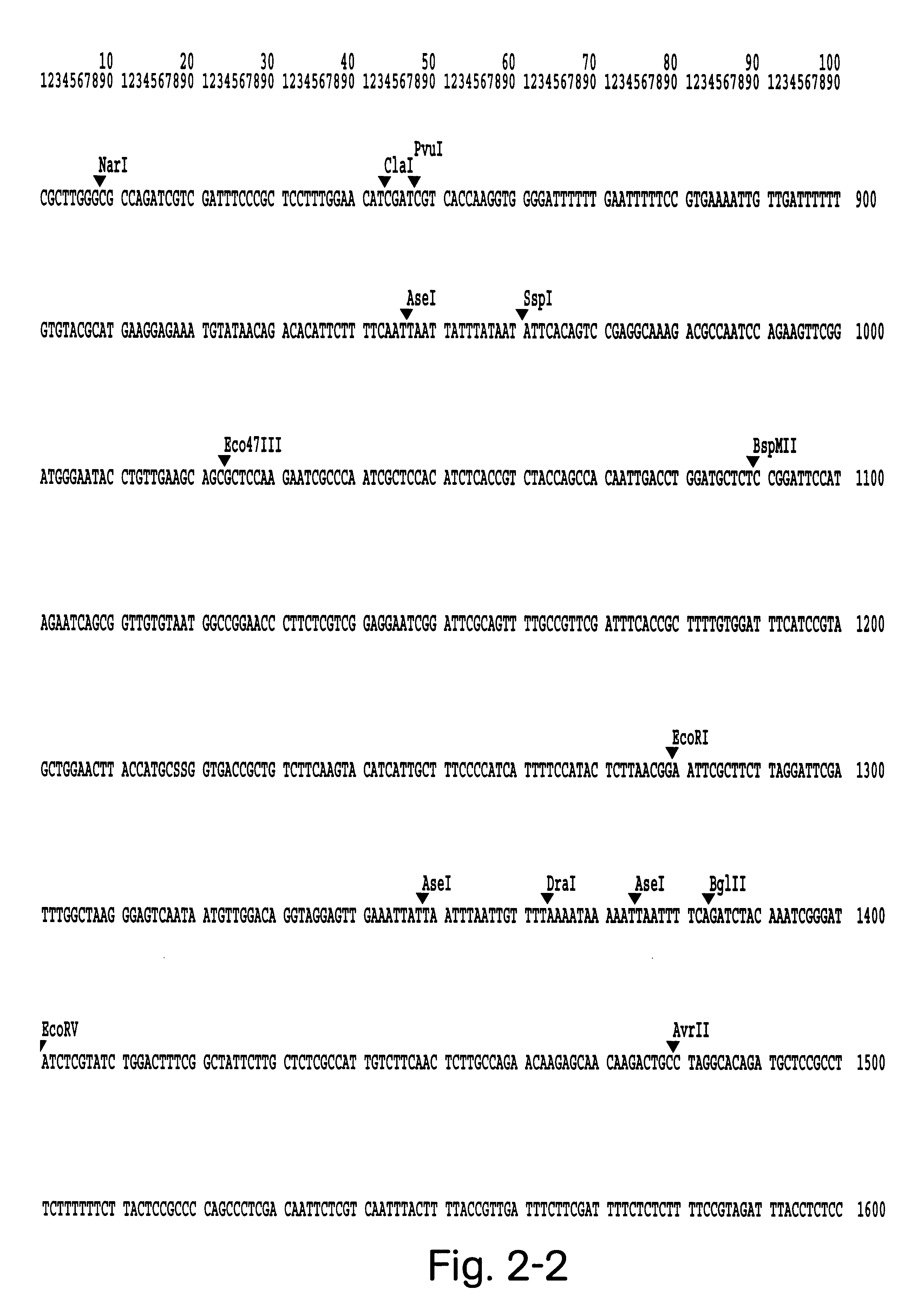Identification and characterization of a gene which protects cells from programmed cell death and uses therefor
- Summary
- Abstract
- Description
- Claims
- Application Information
AI Technical Summary
Benefits of technology
Problems solved by technology
Method used
Image
Examples
example 2
Isolation of ced-9(1f) Mutations
Because the ced-9(n1950) mutation causes a gain of gene function (see above), mutations that reduce or eliminate ced-9 activity (ced-9 loss-of-function (1f) mutations) were isolated by screening for cis-dominant suppressors of ced-9(n1950). Second mutations in ced-9 were expected to be isolated which could suppress the dominant effects of n1950 by inactivating ced-9 (FIG. 7). After screening 9,000 haploid genomes, three candidate suppressor mutations were isolated which were tightly linked to ced-9(n1950). One of these mutations, nDf40, behaved genetically as a large deletion (see below), indicating that the screening procedure should allow the isolation of mutations that completely inactivate ced-9. The other two mutations, n2077 and n2161, seem likely to be ced-9 loss-of-function alleles: these two mutations failed to complement each other while complementing recessive mutations in all known genes in this region. The n2077 and n2161 mutations mapped...
example 3
The ced-9(1f) Alleles Cause Ectopic Cell Deaths
Animals homozygous for ced-9(1f) mutations show several defects (Table 2). Most obviously, homozygous ced-9(1f) mutants derived from ced-9(1f) / + heterozygous mothers hatch and grow to normal size, but generate very few eggs (partial sterility), all of which eventually die, usually during embryogenesis (maternal effect lethality). Furthermore, such first generation ced-9(1f) animals lack many cells normally present in wild-type animals, resulting in a number of additional defects. For example, many ventral cord motor neurons involved in the control of movement are missing, resulting in uncoordinated body movement. The HSN neurons are missing in hermaphrodites, causing an egg-laying defect (Table 2). Similarly, cells are absent from the male tail, resulting in missing or deformed rays (Table 2). Furthermore, several neurons are sometimes missing from the lumbar ganglion, although their absence does not result in an obvious behavioral abno...
example 4
The ced-9 Gene Antagonizes ced-3 and ced-4
If the defects associated with a loss of ced-9 function are caused entirely by the aberrant activation of the programmed cell death pathway, then mutations that prevent the process of programmed cell death might be able to suppress these defects. To test this hypothesis, double mutants were constructed using ced-9(n1950 n2077) and mutations in either ced-3 or ced-4, two genes required for programmed cell death (Ellis and Horvitz, Cell 44:817-829 (1986)). Mutations in ced-3 or ced-4 completely suppressed all defects observed in ced-9(n1950 n2077) animals (Table 3, FIG. 8g). Similar results were obtained for ced-9(n1950 n2161) and ced-9(n1653ts). These observations suggest that the defects seen in ced-9(1f) animals are indeed caused by the activation of the programmed cell death pathway. Furthermore, if these three genes are part of a regulatory pathway, these results indicate that ced-9 acts before ced-3 and ced-4, because the activities of t...
PUM
| Property | Measurement | Unit |
|---|---|---|
| Temperature | aaaaa | aaaaa |
| Temperature | aaaaa | aaaaa |
| Fraction | aaaaa | aaaaa |
Abstract
Description
Claims
Application Information
 Login to View More
Login to View More - R&D
- Intellectual Property
- Life Sciences
- Materials
- Tech Scout
- Unparalleled Data Quality
- Higher Quality Content
- 60% Fewer Hallucinations
Browse by: Latest US Patents, China's latest patents, Technical Efficacy Thesaurus, Application Domain, Technology Topic, Popular Technical Reports.
© 2025 PatSnap. All rights reserved.Legal|Privacy policy|Modern Slavery Act Transparency Statement|Sitemap|About US| Contact US: help@patsnap.com



